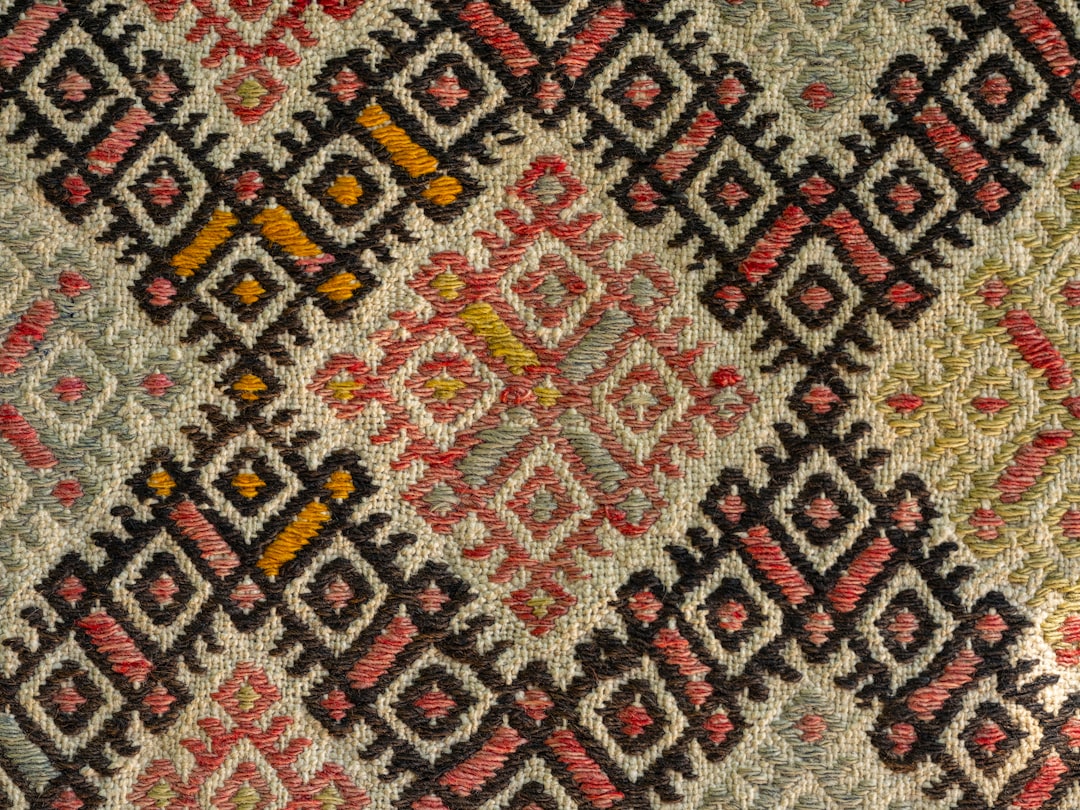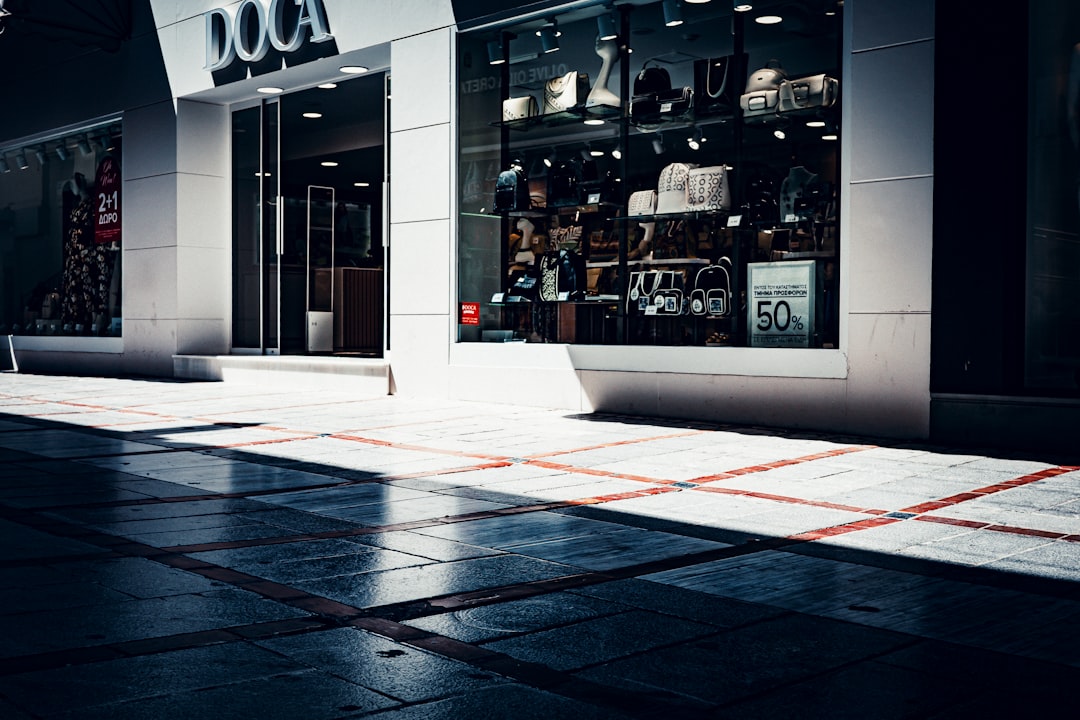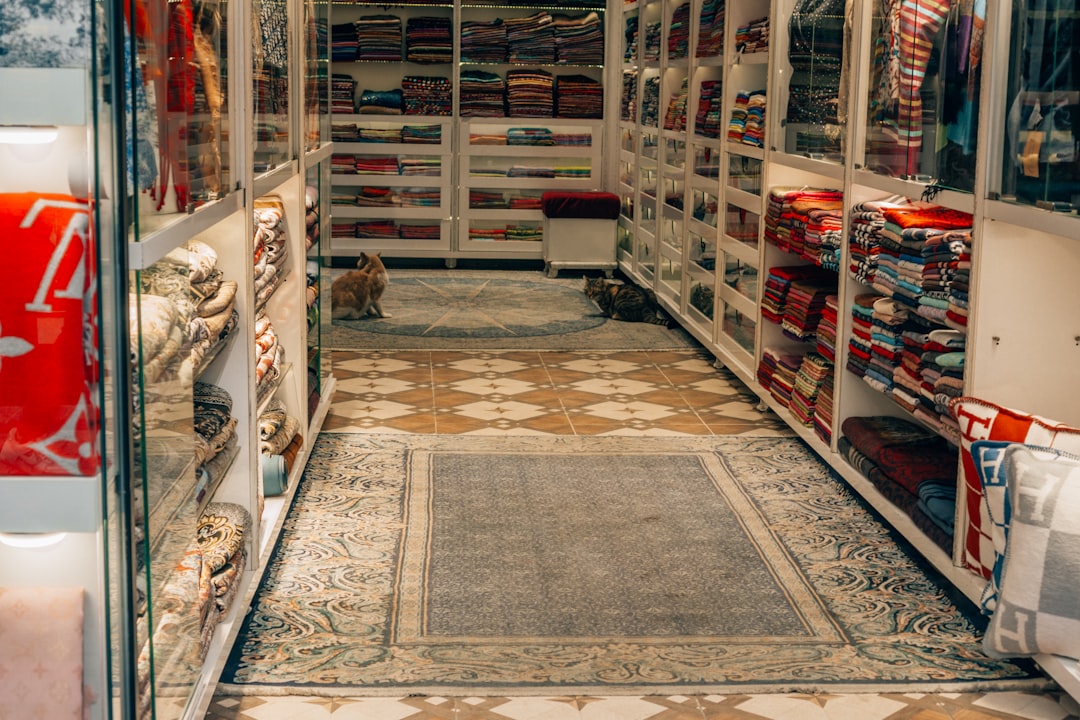

Engage prospects with a scan and streamline customer engagement with FREE QR code marketing tools by Sona – no strings attached!
Create a Free QR CodeFree consultation

No commitment

Engage prospects with a scan and streamline customer engagement with FREE QR code marketing tools by Sona – no strings attached!
Create a Free QR CodeFree consultation

No commitment
Carpet retailers are facing increased pressure to stand out in a crowded marketplace and deliver seamless customer experiences both offline and online. As digital transformation accelerates and digital marketing tools reshape the shopping journey, those who rely solely on print brochures, paper forms, or manual sign-ups risk losing opportunities to engage today’s tech-savvy shoppers. Lost prospects and incomplete data often result in missed sales and diminished visibility into buyer behavior, making it difficult to convert initial interest into loyal customers. This shift has made bridging physical showrooms and digital journeys more urgent than ever.
QR codes are now an essential tool for flooring retailers looking to turn every in-person interaction, whether on the sales floor, in marketing collateral, or during installation, into a measurable, actionable digital moment. With no app to download or complex setup required, QR codes provide a quick, contactless way for customers to access product details, schedule consults, view flooring visualizer tools, or claim personalized showroom pricing. Advanced QR tracking now lets retailers identify engagement even when no form is submitted, making it easier to capture prospects who would otherwise remain anonymous through features like scan analytics.
By strategically incorporating QR code technology into the customer journey, carpet retailers can capture buyer intent at every touchpoint, streamline follow-up, and drive higher conversions. This guide reveals practical frameworks and expert-tested strategies for leveraging QR codes to boost sales, deliver superior service, and transform how you engage your next flooring customer, turning what was once missed opportunity into measurable results. For broader context on campaign planning, see QR in marketing.

QR codes have become a catalyst for modernizing the carpet retail experience, turning static offline touchpoints into gateways for digital engagement and increased flooring sales. Many retailers still face frustration when high-value prospects interact with displays or sales teams but never submit a digital form, making it easy for these hot leads to slip through the cracks. A smart first move is to audit the offline materials and processes that stall momentum, such as printed product books, handwritten appointment cards, or paper price lists. Each of these can be replaced with QR-powered experiences that capture interest the moment it happens and route shoppers to the right digital action via a platform like Sona QR.
Define outcomes early so your team focuses on measurable gains, not just technology for technology’s sake. Targets like a 25 percent lift in QR-sourced quote requests, a 40 percent increase in online installation bookings, or a 20 percent reduction in no-shows for in-home consultations create clarity. When paired with a platform that tracks scans, repeat visitors, and conversion paths, you can validate which placements and calls to action are actually driving sales outcomes with scan tracking.
When QR planning, execution, and analytics live in a single workflow, retailers replace guesswork with evidence. Platforms like Sona QR make it easy to automate attribution, segment audiences by behavior, and sync scan activity across channels, so showroom foot traffic turns into qualified buyers with less manual effort.

Carpet retail has traditionally relied on printed catalogs, static price sheets, and salesperson interactions. These tools can be valuable for education, yet they also introduce friction. Buyers may lose brochures, forget URLs, or stall while waiting for follow-up. A persistent challenge is the lack of visibility into who engaged with displays, requested pricing details from a sales associate, or walked the aisles taking photos, yet never returned a form. Without a reliable bridge to digital calls to action, those moments often disappear into anonymity.
QR codes solve this problem by creating instant next steps anywhere a shopper shows intent. With a quick scan, customers can see a flooring visualizer, compare showroom pricing, read care instructions, or book installation. Dynamic QR codes extend the value further by allowing retailers to update destinations without reprinting signage, which is especially helpful for inventory changes, clearance items, or time-based promotions. The trackability intrinsic to QR also changes the conversation around marketing ROI. Instead of guessing which displays or brochures influence demand, retailers can see exactly which assets drive scans, how many of those scans convert, and which audiences deserve priority follow-up.
By making every surface scannable and every scan actionable, QR codes provide the connective tissue between the showroom, service, and digital marketing efforts that drive measurable growth.

Carpet retailers benefit most from a focused set of QR code formats that map cleanly to their most frequent customer actions. The goal is to minimize friction, maximize measurement, and provide a clear path to purchase or support.
Start with web link QR codes that send scanners to specific product pages or a flooring visualizer experience. These formats are easy to deploy on shelf talkers and sample tags, and they help capture early intent that otherwise remains invisible. Next, use form-based QR codes for quote requests, installation appointments, and surveys to replace paper processes. Each scan triggers a structured flow that populates your CRM with complete information instead of relying on handwritten notes that are easy to lose or misinterpret. For forms, a simple way to start is with Google Forms.
Static codes work well for evergreen materials like a store hours poster or a general catalog PDF. Dynamic codes make more sense for pricing, promotions, inventory, or anything that changes frequently. Use a QR management tool like Sona QR to generate, update, and attribute every format in one place so your team can move fast and never lose sight of high-potential leads.

The highest-impact QR placements in carpet retail are the exact moments when buyers need clarity or confidence to move forward. These are often the points where analog workflows break down, such as when a shopper compares two carpet samples, takes photos, then leaves with no digital trail. Strategic QR deployment turns these moments into conversion catalysts by enabling instant action and persistent follow-up.
Start in the showroom where decision-making happens. Place scannable touchpoints on sample boards, near price signage, and along high-traffic routes. Expand your footprint to direct mail, event booths, and storefront windows to capture interest before or after store hours. Then extend QR value into the post-purchase phase by embedding codes in delivery packaging or care guides to spark reviews, warranty registrations, and repeat business. For social proof, drive scanners straight to Google reviews.
By meeting customers in the moments that matter most, you remove friction and create a clear path to conversion while collecting data that informs merchandising, staffing, and marketing investment.
QR use cases are most effective when they match specific customer needs and the physical context of the interaction. Focus on placements that remove obstacles, speed up decisions, and capture signals your team can use in follow-up.
Together, these use cases cover the full journey from first visit to post-sale engagement. They also ensure that each interaction becomes a measurable event that can be segmented and nurtured for higher lifetime value.
Every QR scan is a behavioral signal containing context that traditional lead capture often misses. When you assign different codes to products, events, or buying stages, you create a data fabric that reveals intent and helps your team provide exactly the right follow-up. Instead of treating all showroom visitors the same, you can focus on high-fit segments and deliver messaging that resonates.
Start by mapping your funnel and aligning QR codes to each stage. Awareness-level scans might come from window decals or direct mail, consideration-level scans from sample tags or comparison boards, and conversion-level scans from pricing sheets or coupon redemption. Tag each scan with metadata that indicates the source, product line, and desired action. This structure allows your CRM to trigger tailored workflows without manual sorting.
With a platform like Sona QR, these segments update in real time as scans occur. That means your team can move from broad, generic follow-up to precise, behavior-led engagement that respects where each buyer is in the journey.
QR codes unlock a connected, measurable funnel across print, in-store, events, and digital channels. When each placement links to a controlled destination and feeds data back into a central platform, you move from siloed campaigns to a unified strategy. The result is better attribution, smarter spend allocation, and a smoother customer experience.
Consider how shoppers discover and evaluate flooring. Many start by gathering ideas at home, then visit a showroom to touch and compare samples, and often return online to confirm pricing or schedule measurements. QR codes let you map and accelerate that path. You can meet a prospect with a scan opportunity in a mailer, continue the conversation on a sample board, and close the loop with a follow-up offer after installation. For display placements, use digital signage to prompt “see it in your room” moments, and apply multi-touch thinking with Sona’s take on multi-touch models.
Centralizing QR creation, management, and analytics in Sona QR lets you coordinate all these channels from one dashboard, ensuring that your offline-to-online funnel is both connected and accountable.
Define a clear campaign goal that aligns with a measurable business outcome. Examples for carpet retailers include increasing showroom appointment bookings during spring flooring events, accelerating quote requests for premium lines, or boosting post-installation reviews to fuel referral programs. Clarity at this stage helps determine which offline interactions need better digital capture and which code formats and placements make sense.
Translate the goal into one primary action per code. If the aim is appointment volume, drive scans to a booking page with time slots and SMS confirmation. If the focus is merchandising, send scans to a visualizer flow that showcases a curated collection. Reducing choice at the destination often improves completion rates and makes your data cleaner.
Select static or dynamic based on content volatility and the level of measurement you need. Static is fine for evergreen items like store hours or a generic catalog PDF. Dynamic is ideal when you expect to run experiments, update pricing or inventory, or attribute performance across campaigns. For most sales-driving use cases, dynamic codes are the better long-term investment via Sona QR.
Consider the format that supports the action best. For contact exchange, use a vCard. For conversations, use SMS or email pre-fills. For measurable conversions, use trackable web links with UTMs or a hosted form integrated with your CRM. A consistent taxonomy across codes ensures clean reporting and reliable retargeting.
Branded, high-contrast codes with clear CTAs outperform generic black-and-white squares in most retail settings. Add your logo, use brand colors within safe contrast ratios, and apply a visual frame that helps the code pop on busy displays. Pair every code with a short value-driven CTA such as “Scan to see this in your room,” “Scan for today’s price,” or “Scan to book a free measurement.”
Test early and often under real conditions. Check scannability from various angles and distances, in different lighting, and on multiple device types. Ensure the landing experience is mobile-first, loads quickly, and matches the promise of the CTA. If a code promises pricing but lands on a generic homepage, scan fatigue will rise and conversion will fall.
Roll out codes where customers naturally transition from offline research to online action. In a carpet showroom, sample tags, aisle stanchions, and endcaps are high performers. Beyond the store, add codes to direct mailers, door hangers, event signage, and installation packets. For post-sale engagement, place QR codes on care guides, dust bags for leftover carpet, and thank-you cards to prompt reviews and referrals.
Match each placement to the buyer’s mindset. At the front window, a “See it in your room” message attracts casual passersby. At the pricing wall, “Check today’s financing offer” resonates with shoppers nearing a decision. On delivery boxes, “Register your warranty” or “Get care instructions” reinforces value and builds loyalty. For mail-based campaigns, start with direct mail codes.
Measurement is what elevates QR from a novelty to a scalable growth lever. Monitor scan volume, device type, conversion rate, and time-to-action in a centralized dashboard. Look for patterns such as peak scanning hours, product categories with disproportionate engagement, and codes that drive a high rate of repeat scans. Correlate these signals with pipeline indicators in your CRM to understand impact on revenue.
Iterate quickly. Adjust CTA language, reposition underperforming codes, and A/B test landing pages. Consolidate learnings into a playbook so your team knows which placements and messages consistently deliver results. With Sona QR, you can track scans in real time, sync them to HubSpot or Salesforce, and attribute revenue using Sona’s buyer-journey analytics. For integrations, see the HubSpot walkthrough in Sona’s HubSpot CRM guide, and for measurement, review pipeline influence.
Carpet retailers need more than raw scan counts. The goal is full-funnel attribution that shows how QR interactions advance the buyer journey and contribute to revenue. Without end-to-end data, a shopper might engage with displays, look up pricing via a scan, then disappear from your CRM because they never filled a form. Advanced QR platforms solve this by linking scans to contact records, enriching profiles over time, and mapping scan data to outcomes such as booked measurements, quotes delivered, and closed sales.
Track granular points of interest. Which product tags spark the most visualizer sessions? Which aisle placements tend to convert to consultations? How do weekend scans compare to weekdays? When you sync Sona QR with your CRM, you can connect these dots automatically. Sona then extends visibility with identity resolution and multi-touch attribution so you can see how QR activity interacts with web visits, emails, and ads across the journey. For deeper strategy, explore Sona’s take on account identification and multi-touch attribution. The result is a clear view from first scan to final invoice.
By treating each scan as actionable intelligence, you turn previously anonymous showroom traffic into structured data you can measure, improve, and monetize.
Once the basics are in place, amplify results by strengthening your measurement, messaging, and staff enablement. Unique codes for each asset are essential so you can compare performance. UTM parameters ensure accurate channel attribution. Automation extends impact by turning scans into instant follow-ups, rather than relying on manual reminders days later. Staff training elevates everything, because a well-timed nudge from an associate can double scan rates.
Get creative with deployments that fit how your customers shop and live. For instance, attach a QR to a wallet-sized “sample checkout card” that customers take home with borrowed swatches, linking directly to a comparison page for those exact SKUs. Or add a QR to your installation truck wraps that drives passersby to a local offer page, capturing community interest while crews are on site. For inspiration on what’s working in flooring showrooms, see this industry take on QR as sales tools.
These practices address common pitfalls such as blended reporting, missed retargeting windows, and low in-store adoption. Consistent use compounds gains over time.
Choosing the right QR platform determines how effectively you can scale from a few experiments to a fully integrated growth engine. Carpet retailers should evaluate platforms on several criteria: support for static and dynamic codes, bulk generation and management, visual customization options, and native integrations with CRM and ad systems. The ability to set roles and permissions, schedule destination changes for time-bound promotions, and manage vanity URLs will also matter as your program grows.
Look for platforms with proven attribution capabilities so you can connect scans to revenue. Case studies often show 20 to 35 percent ROI uplift after implementing QR-led journeys that blend in-store interactions with dynamic offers and automated retargeting. Industry consultants report increased customer preference for self-serve tools in showrooms, especially visualizers and real-time pricing pages that reduce uncertainty. Feedback analysis reveals that transparent information at the point of decision builds trust, shortens the buying cycle, and helps retailers avoid losing high-interest prospects who browse silently. For measurement fundamentals, see Sona’s view on revenue attribution.
Sona QR is designed with these needs in mind. It centralizes code creation, tracking, and integrations, then pairs with Sona.com for cross-channel attribution so retailers can prove impact with confidence. Explore Sona QR’s retail strategies for more ideas.

Carpet retailers are deploying QR codes in creative ways that directly address the pain of anonymous interest and manual follow-up. The best examples align QR placements with buyer behaviors and store operations so each scan moves the shopper forward and feeds measurable data back to the team.
Several retailers report performance breakthroughs after replacing analog workflows with smart, scannable journeys. One regional chain digitized its sample library by placing QR codes on every carpet tile, linking to a visualizer and spec sheet. Within months, visualizer usage jumped by more than 50 percent, and sales teams had reliable data on which SKUs received the most attention. Another store chain used event-specific codes on home show signage with an exclusive booking offer, driving a 30 percent spike in measurement appointments across a single weekend while segmenting leads by event for targeted follow-up.
By aligning QR use cases with intent-rich moments, retailers lift conversions and gain the data needed to double down on what works.
Successful QR programs balance strong creative with operational discipline. The most common pitfalls are easy to avoid with a bit of planning. Codes hidden at eye level or buried in cluttered displays will not get scanned. Landing pages that fail to match the promise of the CTA cause drop-offs. And teams without a clear plan for follow-up will lose momentum and the opportunity to convert.
Build a checklist of design and execution standards for your store teams, then reinforce it with regular reviews. Encourage associates to invite scanning as part of the demo process, and reward them for scan-driven conversions. Treat underperforming codes the same way you would an underperforming ad set by pausing, revising, and relaunching with improvements informed by data.
A disciplined approach turns QR from a tactic into a repeatable growth system that drives new sales, repeat engagement, and long-term loyalty.
QR codes for carpet retailers are more than a convenience; they are a strategic engine for transforming offline interactions into data-driven digital engagements. For businesses that have long struggled with anonymous showroom traffic, lost prospect signals, incomplete customer data, or missed upsell opportunities, QR technology now offers actionable solutions. With capabilities like tailored audience segmentation, integrated tracking, fast showroom pricing updates, and seamless CRM enrichment, carpet retailers can achieve instant engagement, accelerate buyer decisions, and build lasting customer relationships.
By thoughtfully integrating QR code technology into marketing, sales, and service touchpoints, flooring retailers unlock a scalable way to drive conversions, measure outcomes, and enhance the modern shopper’s journey. The next generation of carpet retail belongs to those who harness QR codes not simply as links, but as smart, actionable assets embedded into every step of the buyer’s path, ensuring no opportunity slips away unnoticed or unserved. If you want to get started quickly, Start creating QR codes for free, then use Sona.com to connect scans to pipeline and revenue for a complete view of impact.
QR codes have transformed carpet retailers from traditional showroom visits into dynamic, measurable sales opportunities. Whether it’s attracting new customers, enhancing the in-store experience, or providing instant access to product details and promotions, QR codes replace guesswork with real-time data that turns every interaction into a valuable conversion point. Imagine knowing exactly which carpet displays or marketing materials drive sales—and being able to optimize those touchpoints instantly.
With Sona QR, carpet retailers can create dynamic, trackable QR codes in seconds, update campaigns without costly reprinting, and link every scan directly to revenue insights. No more missed chances or outdated promotions—just smarter, more profitable customer engagement at every step. Start for free with Sona QR today and transform every scan into a confident sale.
Carpet retailers can use QR codes at key touchpoints like sample tags, window signage, and marketing materials to provide quick access to product details, visualizer tools, pricing, and appointment bookings, turning offline interactions into measurable digital engagement that captures buyer intent and drives conversions.
QR codes reduce friction by eliminating the need for manual data entry, enable real-time updates with dynamic codes, provide visibility into customer engagement, improve marketing ROI through scan analytics, and create seamless offline-to-online customer journeys that increase sales and customer loyalty.
Flooring visualizer tools accessed via QR codes let consumers preview carpet styles in their own rooms through mobile devices, accelerating decision-making, differentiating the in-store experience, and capturing buyer intent data even if no form is submitted.
Showroom pricing trends include using QR codes to provide real-time, transparent pricing and exclusive discounts accessible via scans on display signage, which converts anonymous interest into identifiable leads and boosts sales results.
Carpet retailers can centralize QR code creation, tracking, and analytics in platforms like Sona QR to coordinate campaigns across print, in-store, events, and digital channels, automate follow-ups, segment audiences by behavior, and optimize marketing spend based on measurable engagement data.
Use Sona QR's trackable codes to improve customer acquisition and engagement today.
Create Your FREE Trackable QR Code in SecondsJoin results-focused teams combining Sona Platform automation with advanced Google Ads strategies to scale lead generation

Connect your existing CRM

Free Account Enrichment

No setup fees
No commitment required

Free consultation

Get a custom Google Ads roadmap for your business






Launch campaigns that generate qualified leads in 30 days or less.
